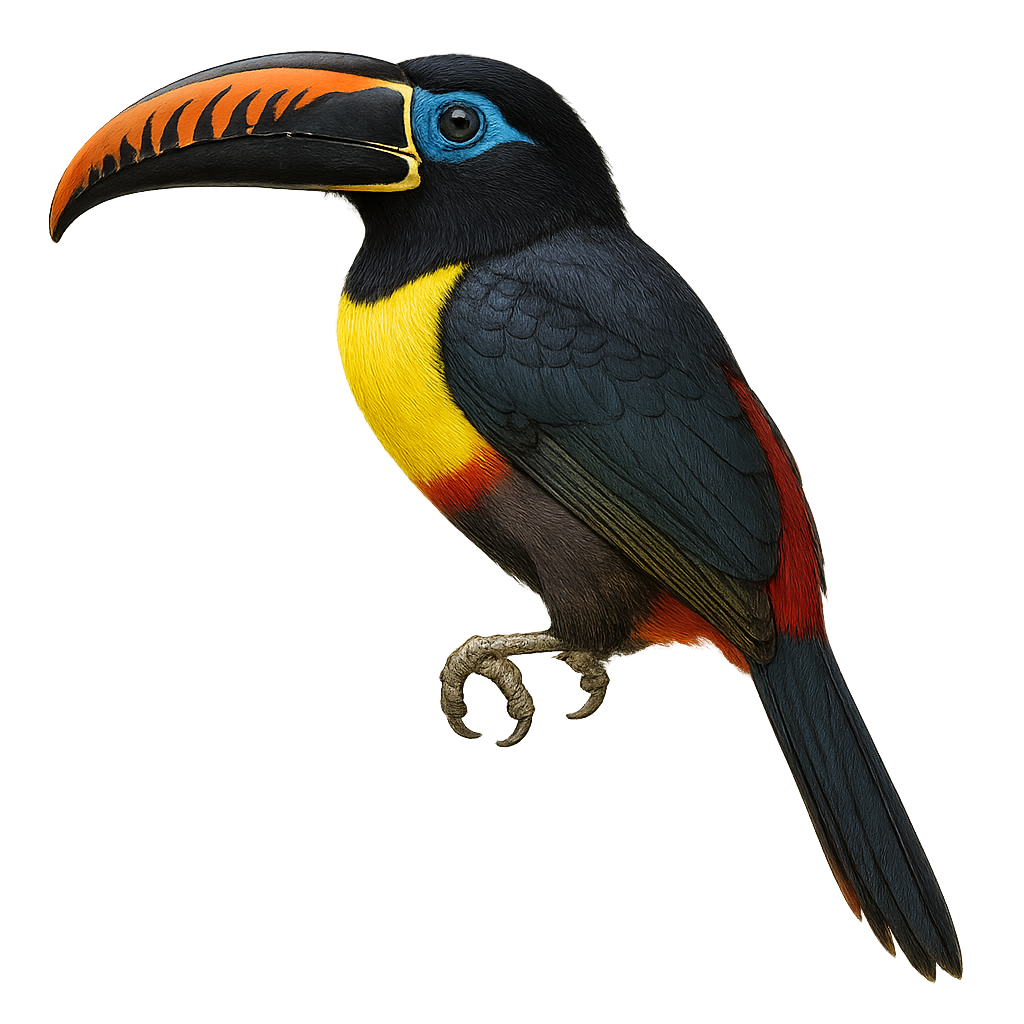Your wildlife photography guide.
Explore the lettered aracari in detail, study its behavior, prepare your shots.
Where to observe and photograph the lettered aracari in the wild
Learn where and when to spot the lettered aracari in the wild, how to identify the species based on distinctive features, and what natural environments it inhabits. The WildlifePhotographer app offers tailored photography tips that reflect the lettered aracari’s behavior, helping you capture better wildlife images. Explore the full species profile for key information including description, habitat, active periods, and approach techniques.
Lettered Aracari
Scientific name: Pteroglossus inscriptus

IUCN Status: Least Concern
Family: RAMPHASTIDAE
Group: Birds
Sensitivity to human approach: Suspicious
Minimum approach distance: 10 m
Courtship display: October to December
Incubation: 15-17 jours
Hatchings: October to January
Habitat:
Tropical forests, secondary forests, forest edges
Activity period :
Primarily active during the day, with peak activity in the morning and late afternoon.
Identification and description:
The Lettered Aracari, or Pteroglossus inscriptus, is a vibrant bird from the toucan family, primarily inhabiting the tropical forests of South America. It is recognized for its striking plumage, which combines shades of green, yellow, and red, and its large, intricately patterned bill. This bird measures about 30 to 35 cm in length and weighs between 130 and 160 grams. Often seen in small groups, it feeds mainly on fruits, but also on insects and small vertebrates. The Lettered Aracari plays a crucial role in seed dispersal, aiding forest regeneration. Although relatively common, its natural habitat is threatened by deforestation.
Recommended lens:
400mm – adjust based on distance, desired framing (portrait or habitat), and approach conditions.
Photography tips:
To photograph the Lettered Aracari, it is advisable to use a telephoto lens of at least 400mm to capture detailed images without disturbing the bird. Look for areas of the forest where fruits are abundant, as these birds are often attracted to food sources. Be patient and discreet, as although they are suspicious, they can become accustomed to a calm and still presence. Take advantage of the early morning hours when the light is soft and bird activity is at its peak.
The WildlifePhotographer App is coming soon!
Be the first to explore the best nature spots, track rutting seasons, log your observations, and observe more wildlife.
Already 1 430 wildlife lovers subscribed worldwide

